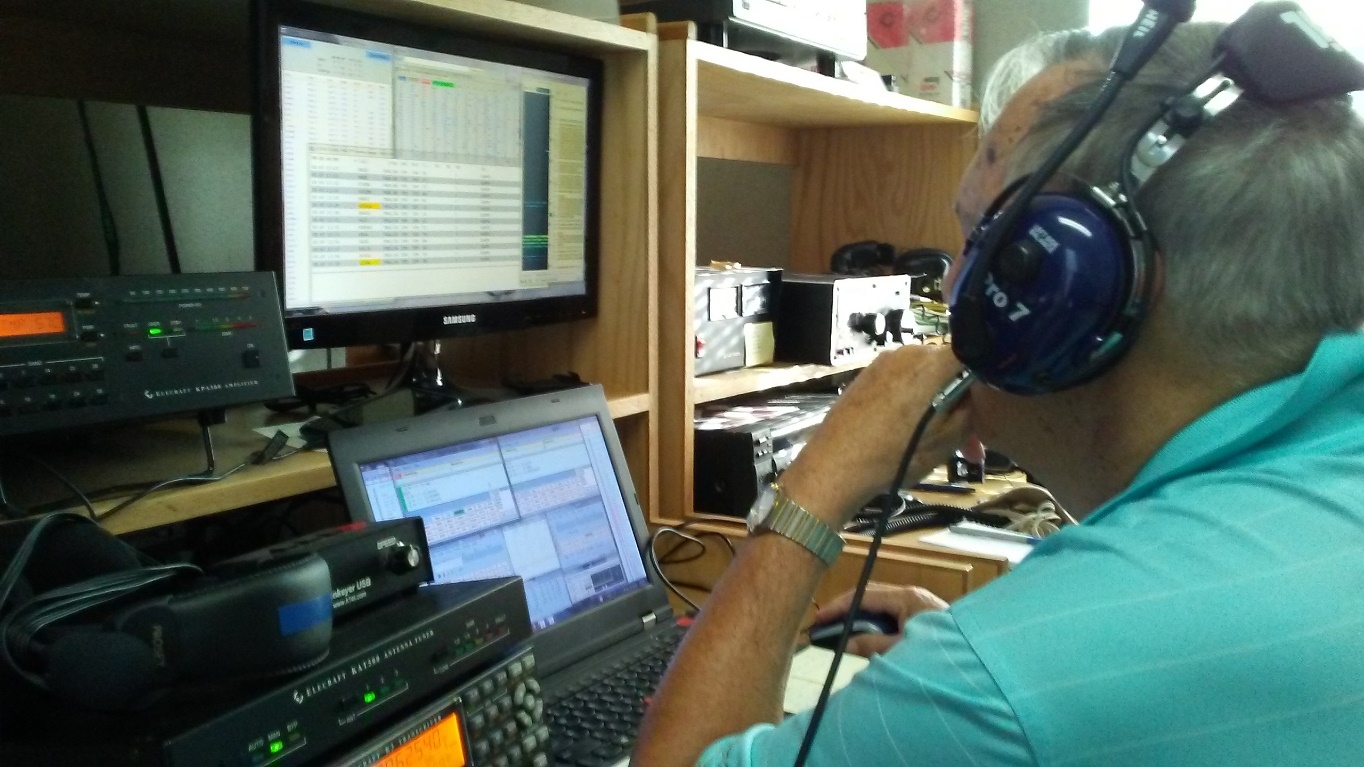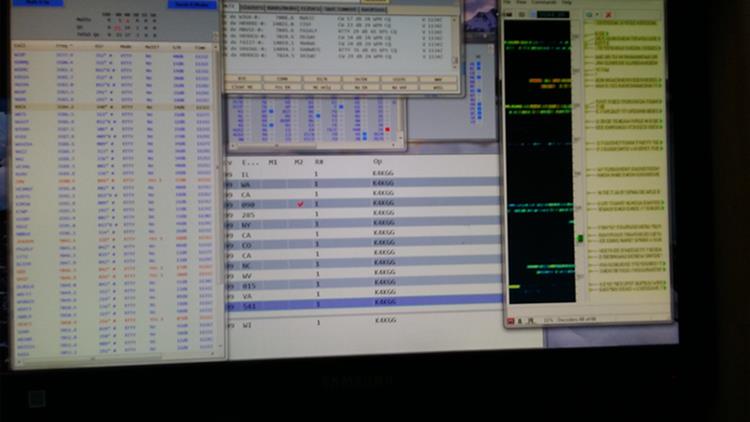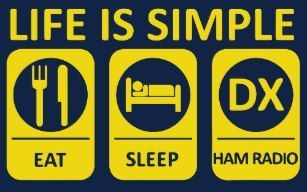Short answer:
We have formed a contest team of BRARA members interested in RTTY contests. We send and receive RTTY encoded messages to as many other stations as possible. We operate as a multi-operator, single transmitter entrant meaning we share the allowed operating time individually operating a single radio, amplifier station. Contests usually allow 24 to 48 hours of operating time. We use N1MM+ software to encode and send the required messages and to log the replies from other stations. No typing is required. A contact takes about 20 seconds to complete.

We have the ingredients for a competitive station, and we have had some success. With more experience and a few more members our team can be truly competitive. If you would like to explore being a RTTY contesting team member, please contact K4KGG, Larry 561 213-4317, llibsch@bellsouth.net or Lou, W9IL@comcast.net.
More detail:
The goal of a contest is to get the highest score. Score is calculated as # contacts X # multipliers. Multipliers are different in different contests but typically each state and DXCC entity counts once for a multiplier. When contesting, you can run, i.e. call CQ and work stations as they answer you, or search and pounce (S+P) i.e. find and work stations calling CQ. Running is the most fun, but only when stations answer your CQ. If stations answer you CQ infrequently you may work stations more quickly by S+P. Keeping contact rates as high as possible means better scores. Working every multiplier you can is also very important as you can see if you look closely at the score calculation.
Contestants are put into classes to even the playing field somewhat. Common classes are single operator QRP; single operator low power; single operator high power; multi operator low and high power using one transmitter; multi operator low and high power using multiple transmitters simultaneously. While this evens the playing field somewhat, stations with large antenna farms do better than those with more modest hardware.
Our station hardware is an Elecraft K3 exciting an Elecraft 500 watt amp. The amp is solid state and automatic. It tracks the frequency on the radio and automatically applies any needed tuner adjustment. Turn it on and forget it – almost. I am awaiting delivery of an Elecraft 1500 watt solid state, automatic amp. We use the Steppir antenna and the 80M vertical. Our station is single radio, two VFO. Each VFO can operate on a different frequency on the same band. Left ear in the headphones hears VFO A. Right ear hears VFO B. You can S+P on both VFOs or run on one and S+P on the other. This can increase Q rates.
Our N1MM+ setup has a Telnet connection to nc7j, a spotting site. N1MM+ filters the RTTY spots into a list of multipliers. Left click on a multiplier QSYs VFO A to the multiplier’s frequency. If you can hear it, work it. A right click on a multiplier QSYs VFO B. Very cool. N1MM+ is also setup to enable very rapid operating. A typical contact takes about 20 seconds.
Strategy is important. Run or S+P? What band should I be on? Keep running or go collect that mult? When should we take our required off time?

There are hams that work 48 hour contests alone. Most don’t have that kind of endurance, and is that kind of self-abuse good for you anyway? One solution is to form a team and share the operating time. A team member needs to be able to operate the contest station hardware and software. He needs to be willing to grow into using the station to optimize its capability. It takes motivation and experience to attain good rates. Very important, a team member needs to show up for the game. Being able to make ahead of time and keep a commitment to operate for agreed upon hours during a contest is essential. Our team is new, has talent, and has a great station. Watch for our scores and our smiles.
By Larry K4KGG

